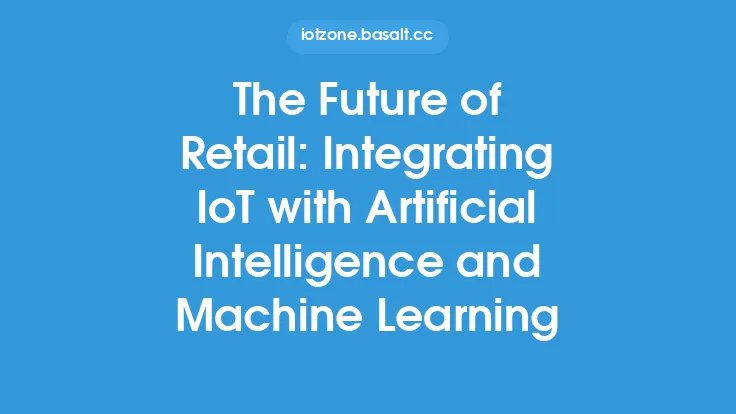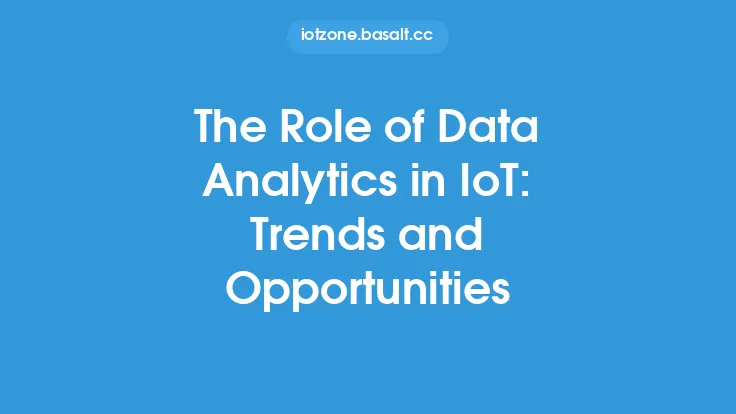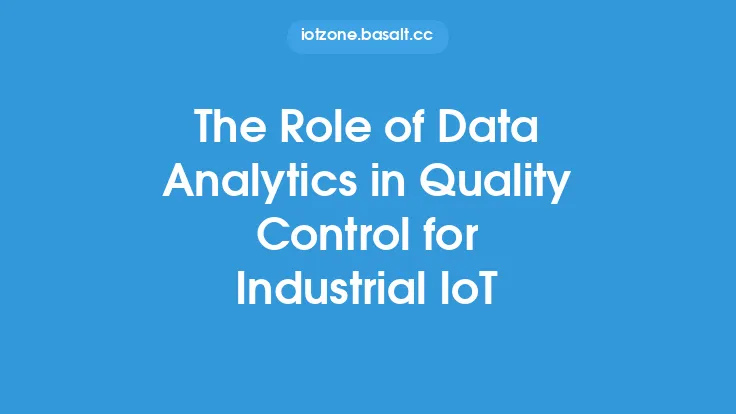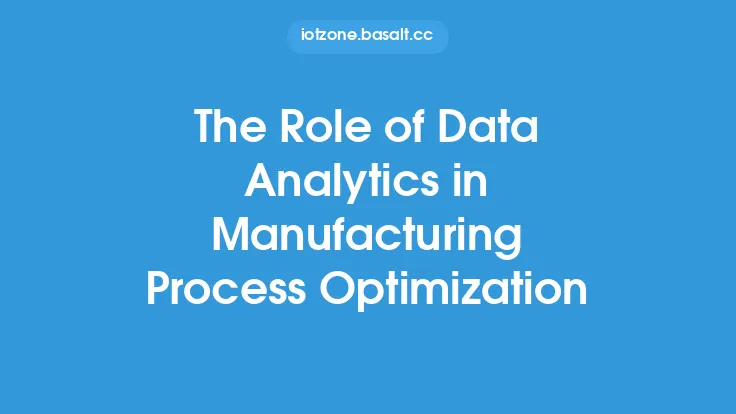The retail industry has undergone significant transformations in recent years, driven by the increasing use of technology to improve operational efficiency, enhance customer experience, and gain a competitive edge. One key technology that has been instrumental in this transformation is the Internet of Things (IoT). IoT refers to the network of physical devices, vehicles, home appliances, and other items that are embedded with sensors, software, and connectivity, allowing them to collect and exchange data. In the context of retail, IoT plays a vital role in retail analytics and business intelligence, enabling retailers to make data-driven decisions, optimize operations, and improve customer engagement.
Introduction to Retail Analytics
Retail analytics involves the use of data and statistical methods to analyze and understand customer behavior, preferences, and shopping patterns. It helps retailers to identify trends, opportunities, and challenges, and make informed decisions to drive business growth. With the proliferation of IoT devices in retail, the amount of data generated has increased exponentially, providing retailers with a wealth of information to analyze and act upon. Retail analytics encompasses various aspects, including customer analytics, market basket analysis, demand forecasting, and supply chain optimization. By leveraging IoT data, retailers can gain a deeper understanding of their customers, optimize inventory levels, and improve the overall shopping experience.
IoT Data Sources in Retail
IoT devices in retail generate a vast amount of data, which can be categorized into several sources. These include:
- Sensors and RFID tags: Used to track inventory levels, monitor shelf stock, and detect customer behavior, such as dwell time and foot traffic.
- Smart cameras: Provide video analytics, such as people counting, heat mapping, and object detection, to understand customer behavior and preferences.
- Mobile devices: Collect data on customer location, browsing history, and purchase behavior, enabling retailers to offer personalized promotions and recommendations.
- Wearables and beacons: Track customer movement and behavior within the store, providing insights into shopping patterns and preferences.
- Social media and online reviews: Offer valuable feedback on customer satisfaction, preferences, and concerns, enabling retailers to respond promptly and improve their services.
IoT Data Analytics in Retail
IoT data analytics in retail involves the use of various techniques, such as machine learning, predictive analytics, and data mining, to extract insights from IoT data. These insights can be used to:
- Improve inventory management: By analyzing data from sensors and RFID tags, retailers can optimize inventory levels, reduce stockouts, and minimize overstocking.
- Enhance customer experience: By analyzing data from smart cameras, mobile devices, and wearables, retailers can gain a deeper understanding of customer behavior and preferences, enabling them to offer personalized promotions and recommendations.
- Optimize store operations: By analyzing data from sensors, cameras, and other IoT devices, retailers can identify areas of improvement, such as reducing energy consumption, improving store layout, and optimizing staff allocation.
- Predict demand and sales: By analyzing data from various sources, including social media, online reviews, and IoT devices, retailers can predict demand and sales, enabling them to make informed decisions on inventory, pricing, and promotions.
Technical Requirements for IoT Data Analytics
To implement IoT data analytics in retail, several technical requirements must be met. These include:
- Data integration: The ability to integrate data from various IoT devices, sensors, and sources, such as social media and online reviews.
- Data processing: The ability to process large amounts of data in real-time, using technologies such as cloud computing, edge computing, and big data analytics.
- Data storage: The ability to store and manage large amounts of data, using technologies such as data warehousing, data lakes, and NoSQL databases.
- Data security: The ability to ensure the security and integrity of IoT data, using technologies such as encryption, access control, and authentication.
- Data visualization: The ability to present complex data insights in a clear and intuitive manner, using technologies such as data visualization tools, dashboards, and reports.
Benefits of IoT in Retail Analytics
The use of IoT in retail analytics offers several benefits, including:
- Improved operational efficiency: By optimizing inventory levels, reducing energy consumption, and improving store layout, retailers can reduce costs and improve profitability.
- Enhanced customer experience: By offering personalized promotions and recommendations, retailers can improve customer satisfaction, loyalty, and retention.
- Increased sales and revenue: By predicting demand and sales, retailers can make informed decisions on inventory, pricing, and promotions, enabling them to increase sales and revenue.
- Competitive advantage: By leveraging IoT data and analytics, retailers can gain a competitive edge, differentiating themselves from competitors and establishing a leadership position in the market.
Challenges and Limitations of IoT in Retail Analytics
Despite the benefits of IoT in retail analytics, several challenges and limitations must be addressed. These include:
- Data quality and accuracy: Ensuring the quality and accuracy of IoT data, which can be affected by various factors, such as sensor calibration, data transmission, and storage.
- Data privacy and security: Ensuring the privacy and security of customer data, which is a critical concern in retail, particularly in the context of IoT devices and sensors.
- Scalability and interoperability: Ensuring the scalability and interoperability of IoT devices and systems, which can be a challenge, particularly in large retail environments.
- Cost and ROI: Justifying the cost and return on investment (ROI) of IoT implementations, which can be a challenge, particularly for small and medium-sized retailers.
Future of IoT in Retail Analytics
The future of IoT in retail analytics is promising, with several trends and technologies emerging, such as:
- Artificial intelligence and machine learning: Enabling retailers to analyze and act upon IoT data in real-time, using techniques such as predictive analytics and prescriptive analytics.
- Edge computing: Enabling retailers to process IoT data at the edge, reducing latency and improving real-time decision-making.
- 5G networks: Enabling retailers to transmit and receive IoT data at high speeds, using 5G networks and technologies such as NB-IoT and LTE-M.
- Cloud computing: Enabling retailers to store, process, and analyze IoT data in the cloud, using technologies such as cloud-based data warehousing and big data analytics.




